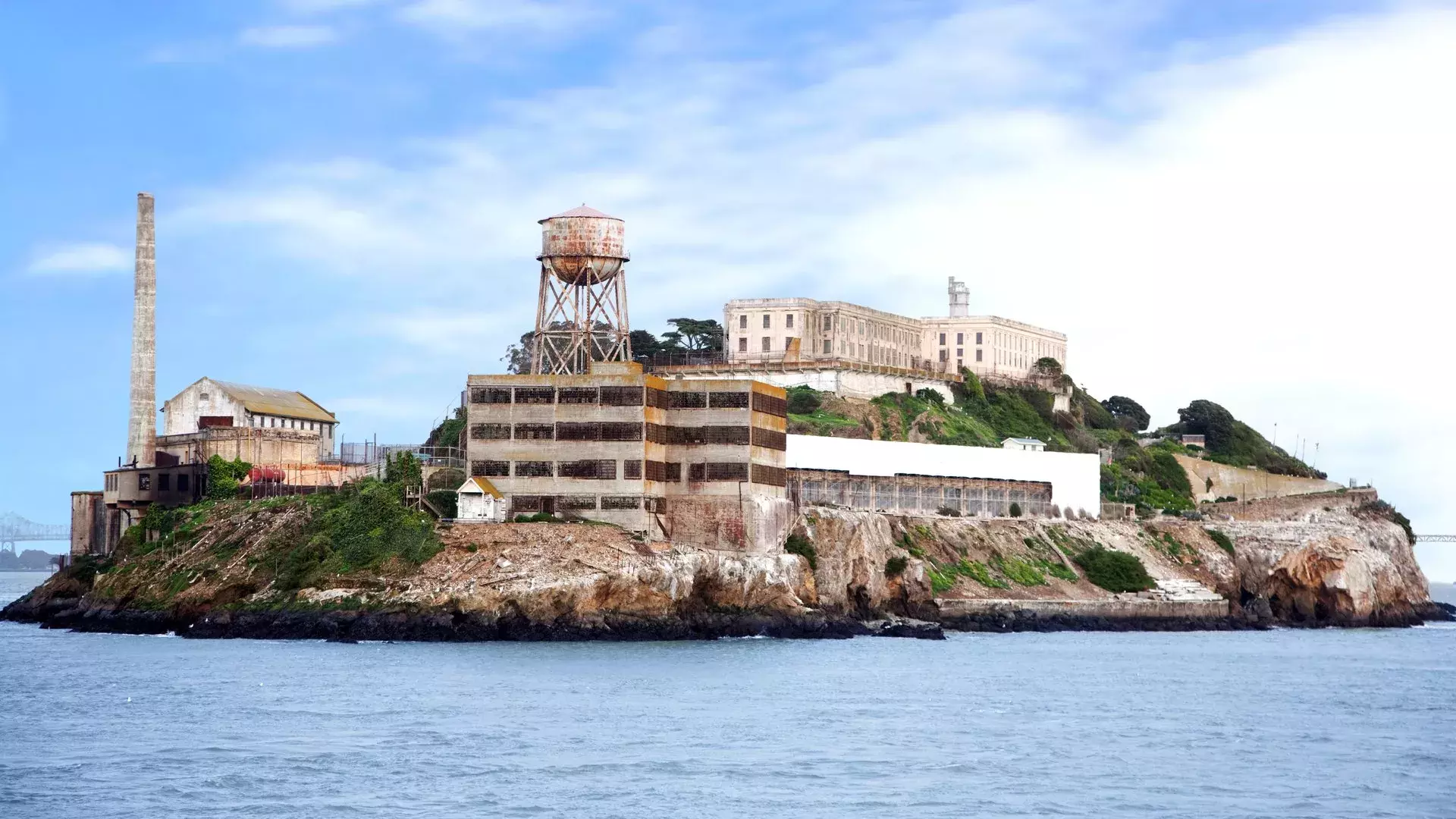
A Brief History of Alcatraz
Alcatraz Island, located in San Francisco Bay, has a storied and multifaceted history that dates back to its origins in the mid-19th century as a military fortification. Initially named Fort Alcatraz, the island played a critical role during the American Civil War, serving as a strategic outpost to protect the bay against potential Confederate attacks. The island’s isolation and rugged terrain made it an ideal location for a military installation aimed at deterring enemy incursions.
In the early 20th century, the U.S. government recognized the need for a facility capable of housing the nation’s most dangerous criminals. Thus, in 1934, Alcatraz was converted into a federal prison, which quickly gained a reputation for housing notorious felons. Its formidable architecture, coupled with the surrounding waters that created a natural barrier, contributed to the perception of Alcatraz as an inescapable fortress. Among its notable inmates were infamous mobsters such as Al Capone and George “Machine Gun” Kelly, both of whom symbolized the violent crime waves of the 1920s and 1930s.
The federal penitentiary functioned until 1963, closing due to the high operational costs and deteriorating facilities. During its three decades of operation, Alcatraz witnessed several standout events, including the infamous 1962 escape attempt that became legendary in American folklore. Following its closure, the island transitioned to a new chapter in history; in the 1970s, it became a focal point for Native American activism when activists occupied the island for 19 months, advocating for indigenous rights and sovereignty.
Today, Alcatraz Island stands as a significant historical site, attracting thousands of visitors each year. It serves as a reminder of its multifaceted past, from its military origins to its notorious reputation as a federal prison, and its role in social justice movements. This blend of history contributes to the mystique of Alcatraz, making it a compelling subject of interest in American history.
Life Inside Alcatraz: Conditions and Daily Routine
Life inside Alcatraz was marked by a strict regimen and formidable security measures designed to prevent escapes and maintain order among the inmates. Constructed on an isolated island in San Francisco Bay, the prison’s unique architectural design, including its sturdy concrete walls and strategically placed watchtowers, contributed to a sense of confinement for those incarcerated. This prevented most inmates from contemplating escape, as the waters surrounding the island posed a dangerous barrier.
The daily routine for inmates at Alcatraz was highly regimented. A typical day began early in the morning with a wake-up call and breakfast, usually consisting of basic fare such as oatmeal, bread, and coffee. After breakfast, inmates would be assigned to various work details, which included tasks such as laundry, kitchen duty, or janitorial work around the prison. This work served a dual purpose: it occupied the inmates’ time and helped maintain the prison’s operations.
Throughout the day, inmates could also participate in recreational activities, albeit under strict supervision. Outdoor time was often limited, but inmates were allowed to play sports like basketball and participate in exercise classes. This outdoor time offered a brief respite from the otherwise intense conditions of prison life. The prison also housed solitary confinement cells known as “dark cells,” where inmates who misbehaved faced the harsh punishment of isolation from the rest of the population.
The social dynamics within Alcatraz were complex. Often, inmates formed alliances for safety and support, but rivalries also existed. Guards maintained a powerful presence, enforcing rules and managing inmate interactions to ensure compliance. The rigid structure of life at Alcatraz not only sought to rehabilitate inmates but also served to deter future crime through the stark reminder of the consequences of unlawful behavior.
The Escape Attempts: Myths and Legends
Alcatraz Island, known for its imposing prison and notorious inhabitants, became a backdrop for numerous escape attempts throughout its operational years. In total, there were 14 known escape attempts between 1934 and 1963, with varying degrees of success and failure. The most famous escape, which occurred in June 1962, involved inmates Frank Morris and brothers John and Clarence Anglin. This daring attempt has not only captivated the public imagination but also inspired countless myths and legends that obscure the realities of prison life and escape.
Inmates faced a myriad of challenges in their pursuit of freedom. The island itself, surrounded by the frigid and turbulent waters of San Francisco Bay, constituted a significant barrier. Additionally, the prison employed stringent security measures, including armed guards and a strict watch system. Despite these obstacles, inmates demonstrated remarkable ingenuity in their escape efforts. For instance, some crafted makeshift rafts from raincoats, while others managed to create intricate tools to aid their ascension and dig through the concrete walls of their cells.
The 1962 escape is often shrouded in layers of myth. Some accounts declare that the three inmates successfully reached the mainland and disappeared, while others suggest they perished in the treacherous currents of the bay. Investigations conducted in the years following the escape yielded mixed results; a few bodies washed ashore, but none were conclusively identified as the escapees. As time progressed, popular culture transformed Morris and the Anglin brothers into almost legendary figures, with stories emphasizing their cleverness and daring. However, it is essential to differentiate between fact and fiction, understanding that many elements of these narratives serve to amplify the lore surrounding Alcatraz rather than reflect the true events that transpired.
Alcatraz Today: A National Historic Landmark
Today, Alcatraz Island stands as a prominent National Historic Landmark, symbolizing the complex history of justice and human rights in America. Once notorious for housing some of the most infamous criminals, including Al Capone and Robert Stroud, the facility is now a crucial educational site that captivates millions of visitors annually. Transformation from a maximum-security prison to a renowned tourist destination exemplifies the efforts made to preserve the island’s rich history while engaging the public in dialogue about its significance.
Following its closure as a prison in 1963, Alcatraz underwent careful restoration and preservation to maintain its historical integrity. The National Park Service manages the site, ensuring that its stories and artifacts are protected and showcased. Through these efforts, Alcatraz has become an essential component of America’s cultural landscape, serving as a stark reminder of the criminal justice system’s complexities and its evolution over time.
Visitors to Alcatraz Island can engage in a variety of experiences that deepen their understanding of its historical context. Guided tours offer an immersive glimpse into life at the prison, featuring original cell blocks and narratives from former inmates and guards alike. Noteworthy exhibitions highlight themes of justice, resilience, and civil rights, providing a platform for reflection on contemporary challenges in these areas. The island thus functions not only as a reminder of its past but also as an active participant in current discussions surrounding social justice, incarceration, and reform.
Ultimately, Alcatraz stands as a testament to the ongoing dialogue about America’s approach to justice and the treatment of those within its system. By preserving its history and facilitating public engagement, Alcatraz continues to foster meaningful conversations, reminding us of the lessons learned from history’s darker chapters.




